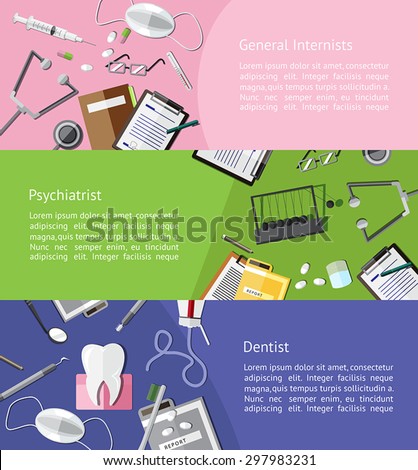How Does Light Therapy Help With Depression
How Does Light Therapy Help With Depression
Blog Article
What Types of Treatment For PTSD Are Available?
Treatment for PTSD assists you learn to handle your signs and symptoms and gain back control of your life. It can include oral medications or talk treatments. Psychiatric therapy, or talk therapy, is the most common therapy for PTSD. It can happen individually or in a group setting.
Symptoms of PTSD can range from being quickly alarmed to avoiding tasks and individuals. These symptoms can also impact member of the family and youngsters.
Cognitive behavioral therapy (CBT).
CBT focuses on altering adverse patterns of thinking and behavior that may be triggering PTSD signs. This treatment is generally temporary and client-centered, with the specialist and customer developing treatment goals with each other. CBT has actually been revealed to decrease PTSD signs in numerous professional trials using clinician-administered and self-report procedures of PTSD. These outcomes are moderated largely by changes in maladaptive cognitive distortions, with some studies reporting physiological, useful neuroimaging, and electroencephalographic changes correlating with reaction to CBT.
TF-CBT utilizes psychoeducation and imaginal direct exposure to show customers just how to far better manage feelings and cope with their traumas. This therapy has also been shown to improve PTSD symptoms in children and teenagers.
Eye motion desensitization and reprocessing (EMDR).
EMDR is an evidence-based therapy that functions by assisting individuals procedure injury utilizing adaptive information processing. It can be utilized by itself or with other therapies. It has been shown to be efficient in treating PTSD. EMDR is commonly utilized around the globe.
It starts with history-taking and a joint therapy strategy. Throughout this stage, you will discuss the reason you are seeking therapy and identify traumatic memories you want to focus on. The therapist will also teach you strategies to take care of any kind of hard or upsetting emotions that may arise throughout a session.
Throughout the recycling phase, you will recall a traumatic memory while taking note of a back-and-forth movement or sound (like your provider's hand crossing your face) till the unfavorable pictures, thoughts, and feelings associated with it begin to diminish.
Somatic experiencing.
A specialist that focuses on this technique will assist you become aware of the physical sensations that accompany your PTSD signs and symptoms. They'll additionally educate you just how to recognize your free nerve system and its role in the trauma feedback.
Unlike other injury treatments, somatic experiencing does not focus on memories or emotions. Rather, specialists work to release the stress from your body and eliminate your signs.
This treatment has been located efficient in a number of randomized controlled tests. Nonetheless, the results from these studies are restricted by tiny sample sizes and various other methodological shortages. These imperfections limit the external legitimacy of these searchings for.
Present-centered therapy.
Present-centered therapy (PCT) is a non-trauma concentrated dialectical behavior therapy (dbt) psychiatric therapy that intends to improve patients' partnerships, impart hope and optimism, and advertise analytical. While PCT lacks direct exposure and cognitive restructuring methods of trauma-focused therapies, it has actually been revealed to be as effective in reducing PTSD signs and symptoms as trauma-focused CBTs.
In a series of eleven studies, PCT was contrasted to a wait list or marginal get in touch with control condition and to TF-CBT. PCT transcended to the WL/MA conditions in lowering self-reported PTSD signs at post-treatment, and it was associated with lowered treatment failure rates. However, the impact size was not large sufficient to be scientifically purposeful.
Reflection.
Meditation aids people relax their nerve systems and practice self-care. This treatment focuses on the physical experience of breathing, and people might get sidetracked by ideas or emotions, yet it is very important to return their emphasis to the breath repeatedly.
PTSD affects not just those who have actually directly experienced the injury, but likewise witnesses and those who deal with emergency -responders or law enforcement. Signs of PTSD can include invasive, upsetting memories, recalls or nightmares, and trouble concentrating or resting.
Avoiding excruciating memories and feelings is an usual reaction to injury, however it only makes signs worse. It is necessary to seek therapy before PTSD disrupts your life and relationships.
Double medical diagnosis treatment.
Signs and symptoms of co-occurring PTSD and compound make use of disorder (SUD) are commonly connected and both should be resolved in recovery. Individuals who experience PTSD can be most likely to turn to alcohol or medicines to self-medicate and temporarily relieve intrusive ideas, flashbacks and unfavorable state of mind swings.
PTSD symptoms include recurrent and uncontrolled traumatic memories or dreams, brilliant and dissociative reactions that feel like experiencing the event, preventing areas, people, discussions, or things associated with the trauma, sensations of hypervigilance and being always on guard or quickly alarmed, and feelings of emotional feeling numb.
Dual medical diagnosis therapy involves treatment and finding out healthier coping mechanisms. It might additionally include pharmacotherapy, such as antidepressants or state of mind stabilizers.